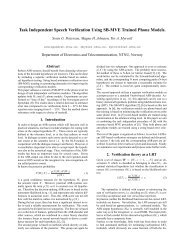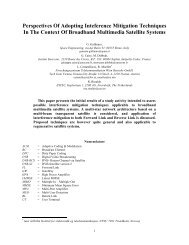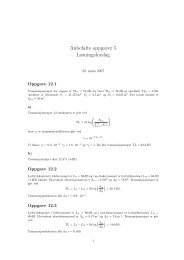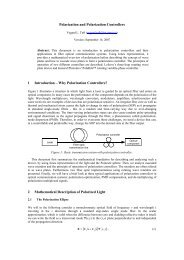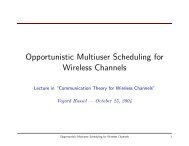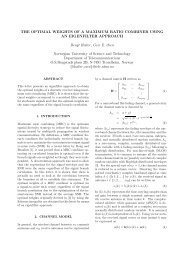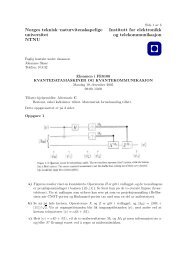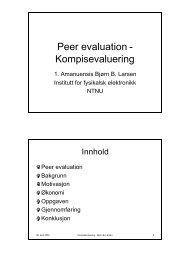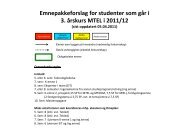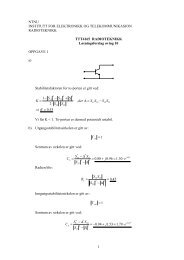Lab 4 Laser - Institutt for elektronikk og telekommunikasjon - NTNU
Lab 4 Laser - Institutt for elektronikk og telekommunikasjon - NTNU
Lab 4 Laser - Institutt for elektronikk og telekommunikasjon - NTNU
You also want an ePaper? Increase the reach of your titles
YUMPU automatically turns print PDFs into web optimized ePapers that Google loves.
1.2 <strong>Laser</strong> fundamentals 8<br />
1.2.2 <strong>Laser</strong> resonators and standing waves<br />
The optical feedback and delay<br />
functions are served by an optical<br />
resonator, such as the one shown<br />
in Fig. 1.1a constructed with two<br />
mirrors that face each other. The<br />
mirrors serve to recirculate, or feed<br />
back, the light with efficiency R =<br />
R1R2, the product of the reflectivities<br />
R1 and R2 of the two mirrors.<br />
The delay time t = 2L/c is<br />
the time it takes light to complete<br />
a round trip between the mirrors.<br />
The net gain <strong>for</strong> a complete round<br />
trip is GR and must be equal to<br />
unity to sustain steady oscillation.<br />
The condition GR = 1 means that<br />
the gain compensates <strong>for</strong> the loss<br />
and the oscillator will operate with<br />
steady power. (What if GR < 1 or<br />
GR > 1?).<br />
There is an additional criterion<br />
that after each round trip the light<br />
wave crests line up with the crests<br />
from the previous round trip. This<br />
is called resonance and results in<br />
a standing wave as shown in Fig.<br />
1.1b. This condition is similar<br />
to the resonances associated with<br />
standing sound waves in an organ<br />
pipe or on a guitar string. The condition<br />
on the mirror separation is<br />
that one round trip contains an integral<br />
number of wavelengths 2L =<br />
mλ, where m is an integer. The<br />
corresponding resonant frequencies<br />
are f m = c/λ = mf fsr , where the<br />
free spectral range f fsr = c/2L is<br />
the separation between resonance<br />
frequencies. Fig. 1.1b has harmonic<br />
number m = 4, but a typical<br />
visible wavelength laser resonator<br />
might have length L = 30 cm operating<br />
at wavelength l = 600 nm<br />
so that m = 1 million.<br />
Figure 1.2a shows resonant fre-<br />
Figure 1.1a: Mirror resonator<br />
Figure 1.1b: Standing wave in a mirror<br />
resonator<br />
Figure 1.2: Typical laser output spectrum



